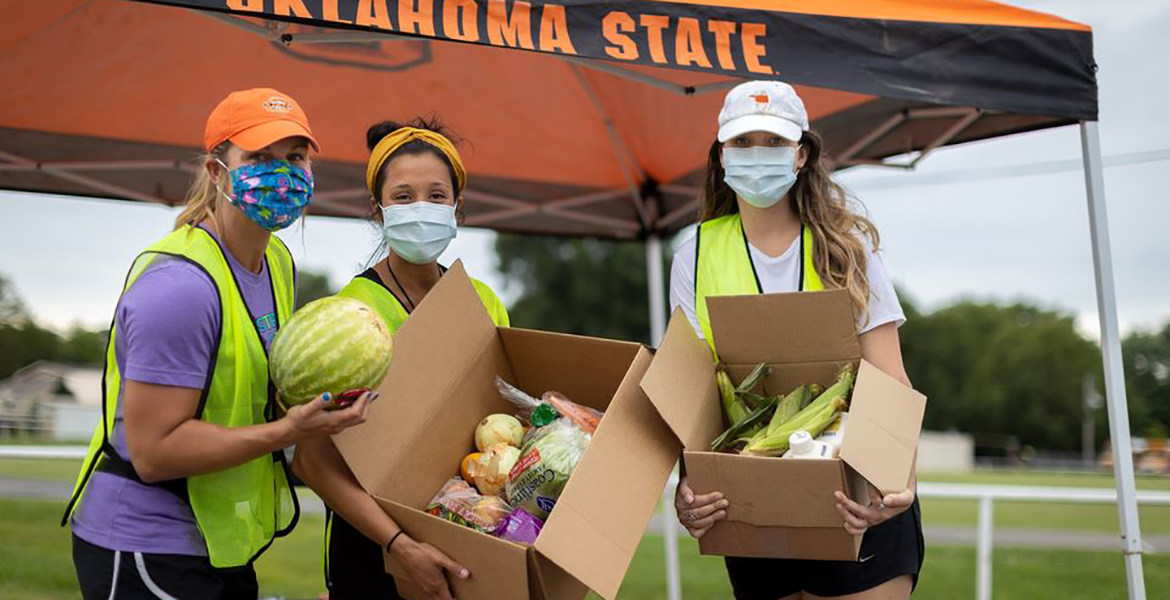
Safe Routes to School, food pantries increase community resilience
Monday, August 31, 2020
In 2018, the High Obesity Project (HOP) was launched by Oklahoma State University faculty and staff to support counties with obesity rates above 40 percent. Two years later, its health initiatives have become a community lifeline amidst coronavirus.
The College of Education and Human Sciences and OSU’s Center for Health Systems Innovation are partnering with the Oklahoma Cooperative Extension Service on the project, which received the five-year funding in the fall of 2018. The High Obesity Program, which is part of the CDC’s Division of Nutrition, Physical Activity and Obesity, funds land-grant universities in states with counties that have more than 40 percent prevalence of obesity in adults.
“It’s been really important for us to be able to work with existing community partners on different plans and objectives they already have going on in the community,” said Lacey Wallace, HOP manager. “We work well together and are able to leverage one another’s funds to help plan future projects.”
Projects include food pantry partnerships, increasing nutrition standards in after-school programs, Safe Routes to School projects and working with local parks and recreation departments. Safe Routes to School supports installation of signage, speedbumps and crosswalks as traffic calming measures for students to more safely walk and bike to school. Intended to encourage students to pursue active lifestyles, it has become especially meaningful amidst coronavirus concerns.
Wallace and other HOP staff members are also ensuring their communities stay fed. Before coronavirus, Adair county HOP educator Jessie Garcia conducted Healthy Food Pantry Assessments, a United States Department of Agriculture (USDA) tool measuring food pantries’ readiness to meet community needs.
“Based on the assessment score, we work with the food pantries to provide healthier foods,” Garcia said. “We were recently able to install six new shelving units, a refrigerator and four deep freezers at a local food pantry to increase their capacity to provide healthier foods.”
Garcia also coordinated distribution of GOFresh boxes to bring the USDA Farmers to Families Program to Westville, Okla. Farmers to Families boxes contain a variety of dairy products and produce, including watermelon, corn, potatoes, oranges and apples. Through four food distributions, volunteers have distributed 100,000 pounds of food worth $120,000.
“It's all about how we can help the children,” Garcia said. “Our food distribution has been very successful in Adair county. How can we give them a better chance at life and increase their access to healthier foods, safer routes to school and promoting physical activity?”
Related stories
MEDIA CONTACT: Brittany Bowman | 405-744-9347 | brittany.bowman@okstate.edu
